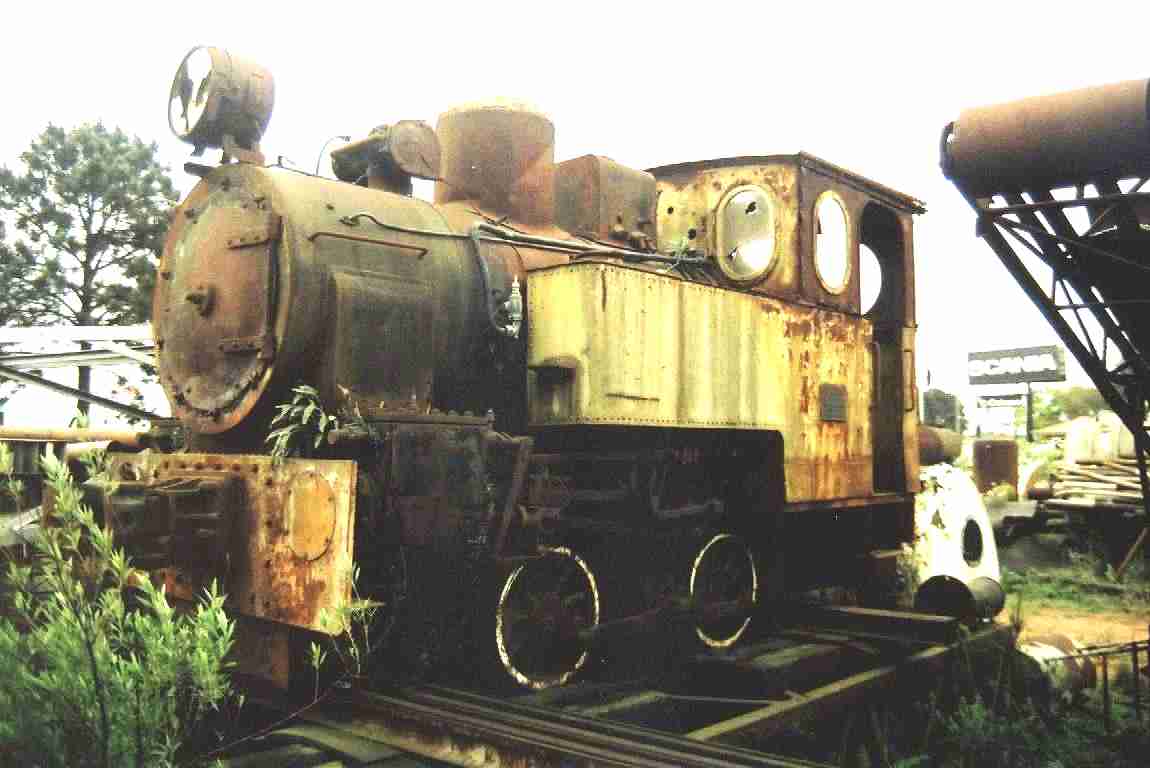
PRESERVED ORENSTEIN & KOPPEL
STEAM LOCOMOTIVES


PRESERVED ORENSTEIN & KOPPEL
STEAM LOCOMOTIVES

| LOCATION | Barranco scrapyard, BR 116, Curitiba, Parana province, Brazil |
| RAILWAY NUMBER | 5 |
| RAILWAY | Usina Barão de Cocais, Minas Gerais province, Brazil |
| WHEEL ARRANGEMENT | Bt (geared) |
| HORSE POWER | 150 |
| GAUGE | 1000mm |
| BUILDER | O&K |
| BUILDER'S NUMBER | 6589 |
| YEAR BUILT | 1913 |
| PREVIOUS
RAILWAYS AND NUMBERS |
EF Campos de Jordão |
| CONDITION | semi-derelict, but essentially complete |
| PHOTO BY | MM |
| PLACE AND DATE | Curitiba. 12.9.2001 |
| NOTES | This was the first and only known steam locomotive of the metre gauge EF Campos de Jordão, opened in 1913, which connected the Central of Brazil main line at Pindamonhangaba with the mountain resort of Campos de Jordão. The central section is steeply graded, but was not rack worked, the gearing of O&K 6589 proving sufficient. It probably worked mostly freight traffic, since some eccentric (and early) petrol railcars were supplied for the passenger traffic. In 1924 the line was electrified, and four teak panelled railcars were supplied by English Electric. When the loco left Campos de Jordão is unknown; it now carries the inscriptions CBU, LC-5, and Usina Barão de Cocais. CBU is probably CBUM, the M having faded over the years. CBUM is an abbreviation for Companhia Brasileira de Usinas Metalurgicas, who owned a steelworks at Barão de Cocais, a town in Minas Gerais, where the loco presumably worked. In 1961 CBUM acquired two Plymouth diesels, Nos. 6 and 7. Between 1961 and 1973 CBUM became Cimetal Siderurgica S.A. (CSSA), which in turn became Cia. Siderurgica de Guanabara (COSIGUA), the current owners of the steelworks in Barão de Cocais. By 1989 the loco was reported as being in the Barranco scrapyard in Curitiba (Narrow Gauge News, No. 175). Since Barranco, a scrap merchant in Curitiba, also has two locos from the sugar mill at Leão Utinga, in Alagoas province in north-eastern Brazil, there is a possibility that the loco worked there too, but the inscription suggests that it came to Barranco from Barão de Cocais. When the first enthusiasts visited Leão Utinga, in the 1970s, they found a varied stock of metre gauge and 500mm gauge locos, including the two locos now at Barranco and a No.5, a Henschel 1C1t, but not O&K 6589, so it seems unlikely that the latter came to Barranco from Leão Utinga. |